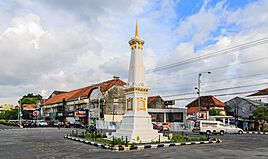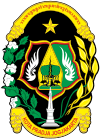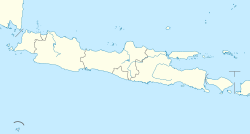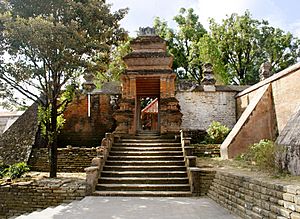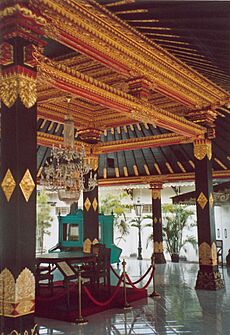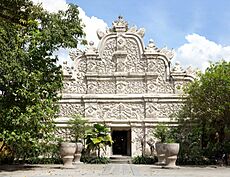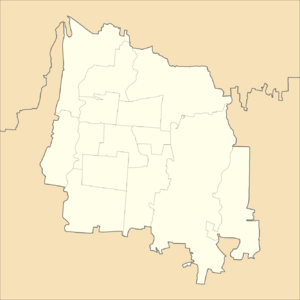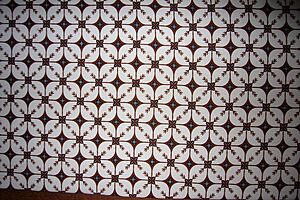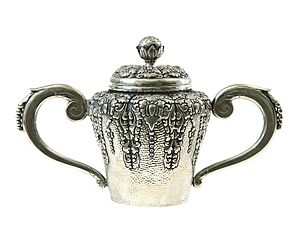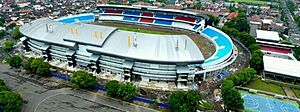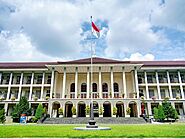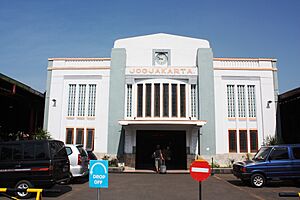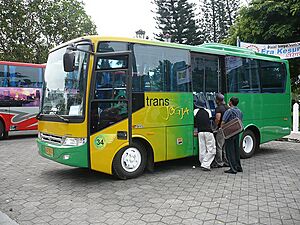Yogyakarta facts for kids
Quick facts for kids
Yogyakarta
|
|||||||||||||||||
|---|---|---|---|---|---|---|---|---|---|---|---|---|---|---|---|---|---|
|
Special region capital
|
|||||||||||||||||
| City of Yogyakarta Kota Yogyakarta |
|||||||||||||||||
| Regional transcription(s) | |||||||||||||||||
| • Javanese | ꦔꦪꦺꦴꦒꦾꦏꦂꦠ Ngayogyakarta |
||||||||||||||||
|
Tugu Yogyakarta
Kraton Ngayogyakarta Hadiningrat
Taman Sari Water Castle
Gedung Agung
Malioboro Street
|
|||||||||||||||||
|
|||||||||||||||||
| Nickname(s): | |||||||||||||||||
| Motto(s): | |||||||||||||||||
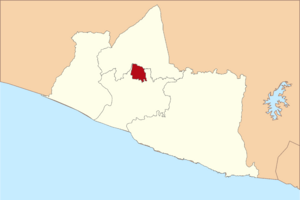
Location within Special Region of Yogyakarta
|
|||||||||||||||||
|
OpenStreetMap
|
|||||||||||||||||
| Country | |||||||||||||||||
| Region | Java | ||||||||||||||||
| Province | |||||||||||||||||
| Area | |||||||||||||||||
| • Special region capital | 32.82 km2 (12.67 sq mi) | ||||||||||||||||
| • Metro | 2,159.1 km2 (833.6 sq mi) | ||||||||||||||||
| Elevation | 113 m (371 ft) | ||||||||||||||||
| Population
(mid 2023 estimate)
|
|||||||||||||||||
| • Special region capital | 375,699 | ||||||||||||||||
| • Density | 11,447.3/km2 (29,648/sq mi) | ||||||||||||||||
| • Metro | 4,010,436 | ||||||||||||||||
| • Metro density | 1,857.46/km2 (4,810.79/sq mi) | ||||||||||||||||
| Demographics | |||||||||||||||||
| • Religion |
|
||||||||||||||||
| Time zone | UTC+7 (Indonesia Western Time) | ||||||||||||||||
| Area code | (+62) 274 | ||||||||||||||||
| Vehicle registration |
|
||||||||||||||||
| HDI (2023) | |||||||||||||||||
|
|||||||||||||||||
Yogyakarta (pronounced Yohg-yə-KAR-tə) is a special city in Indonesia. It is the capital of the Special Region of Yogyakarta on the island of Java. Yogyakarta is unique because it is the only Indonesian city still ruled by a traditional royal family, the Sultan.
This city is a very important place for Javanese arts and traditions. You can find classical Javanese ballet, special batik fabrics, traditional drama, music, and wayang puppetry here. Yogyakarta is also famous for its many schools and universities, earning it the nickname "City of Students." One of its most well-known schools is Gadjah Mada University, which is one of the largest and most respected in the country.
Yogyakarta was once the capital of the Yogyakarta Sultanate. It even served as the capital of Indonesia from 1946 to 1948 during the Indonesian National Revolution. A part of the city, Kotagede, was the capital of the Mataram Sultanate long ago, between 1587 and 1613.
In mid-2023, about 375,699 people lived in Yogyakarta. The larger area around the city, including places like Magelang, is home to over 4 million people. Yogyakarta also has one of the highest Human Development Index (HDI) scores in Indonesia, which means people there generally have a good quality of life.
Contents
- What's in a Name? The Meaning of Yogyakarta
- A Look Back: The History of Yogyakarta
- Exploring Yogyakarta: Geography and Landmarks
- Yogyakarta's Weather: A Tropical Climate
- How Yogyakarta is Governed: Administrative Districts
- Yogyakarta's Economy: How the City Makes Money
- Who Lives in Yogyakarta? Demographics and Religion
- Visiting Yogyakarta: Top Tourist Attractions
- Culture and Traditions in Yogyakarta
- Sports in Yogyakarta
- Learning in Yogyakarta: Education Hub
- Getting Around Yogyakarta: Transportation
- News and Media in Yogyakarta
- Sister Cities of Yogyakarta
- Images for kids
- See also
What's in a Name? The Meaning of Yogyakarta
The name Yogyakarta comes from the ancient Indian city of Ayodhya. This city is famous as the birthplace of the hero Rama from the Ramayana story.
- Yogya means "suitable" or "proper."
- Karta means "prosperous" or "flourishing."
So, Yogyakarta means "a city that is fit to prosper."
You might also see the city spelled "Jogjakarta." This spelling comes from the old Dutch way of writing the name. Both "Yogyakarta" and "Jogjakarta" are used today.
A Look Back: The History of Yogyakarta
Ancient Kingdoms: Mataram (8th–10th Century)
Long ago, around 732 CE, the area known as "Mataram" became the capital of the Medang Kingdom. This kingdom was founded by King Sanjaya. An old stone carving, the Canggal inscription, found near Yogyakarta, tells us about this.
Mataram became a center for rich and complex Javanese Hindu-Buddhist culture for about 300 years. Many famous temples were built during this time, including Borobudur and Prambanan.
Around 929 CE, the ruler King Mpu Sindok moved the kingdom's capital from Central Java to East Java. Historians believe a big eruption from Mount Merapi or a power struggle might have caused this move.
The Majapahit Empire (1293–1527)
During the time of the powerful Majapahit Empire, the area around modern Yogyakarta was still called "Mataram." It was one of the twelve provinces in Java ruled by the Majapahit kings.
The Mataram Sultanate (1587–1755)
Kotagede, which is now a part of southeastern Yogyakarta, was the capital of the Mataram Sultanate from 1587 to 1613.
Under Sultan Agung Hanyokrokusumo (1613–1645), the Mataram Sultanate became the biggest kingdom in Java. It grew to control much of Central, East, and West Java.
The Birth of Yogyakarta: Secession and European Influence (1745–1830)
A civil war broke out in the Mataram Sultanate. Pakubuwono II worked with the Dutch East India Company, giving them some land. His younger brother, Prince Mangkubumi, disagreed, fearing the people would become slaves under Dutch rule.
Prince Mangkubumi won battles against Pakubuwono II's forces. He then declared his own rule in the southern part of the Mataram Sultanate.
The Yogyakarta Sultanate was officially created on February 13, 1755, with the signing of the Treaty of Giyanti. Prince Mangkubumi became the first Sultan of Yogyakarta, named Hamengkubuwono I. His family still rules Yogyakarta today. The Sultan and his family moved into the Palace of Yogyakarta on October 7, 1756.
In 1812, during a short period of British rule, British forces led by Sir Stamford Raffles attacked and captured the Yogyakarta palace. This was a big event in Indonesian history, as the palace had never been taken before.
Yogyakarta in Modern Indonesia (1945–Present)
After Japan was defeated in 1945, Sukarno declared Indonesia's independence. Sultan Hamengkubuwono IX quickly supported the new nation, making the Yogyakarta Sultanate part of the Indonesian Republic.
Yogyakarta played a key role in Indonesia's fight for independence (1945–1949). The city became the capital of the Indonesian Republic from 1946 to 1948 when Jakarta fell to the Dutch. Even when the Dutch invaded Yogyakarta later, the Indonesian forces fought back.
Because of its important help in the fight for independence, Yogyakarta was given special status as an "autonomous district." This means it is the only region in Indonesia led by a recognized monarchy.
Exploring Yogyakarta: Geography and Landmarks
The city of Yogyakarta covers about 32.82 square kilometers. The heart of the city is around the Sultan's palace, the Kraton.
Jalan Malioboro is a famous shopping street for tourists, full of vendors and markets. Further north, Jalan Solo is where locals often shop. The big Beringharjo market and the old Dutch fort of Vredeburg are also popular spots.
Around the Kraton is a busy neighborhood that used to be the Sultan's private land. You can still see old walls and the ruins of the Taman Sari water castle, built in 1758 as a pleasure garden. This site is now a popular place for tourists to visit.
North of the city is Mount Merapi, an active volcano. It's one of the most active volcanoes in Indonesia and has erupted many times since 1548.
Yogyakarta's Weather: A Tropical Climate
Yogyakarta has a tropical monsoon climate. This means it has a wet season and a drier season. The wettest month is usually January, with a lot of rain. The driest months are from June to September.
The temperature in Yogyakarta is usually warm, around 26 to 27 degrees Celsius (about 79 to 81 degrees Fahrenheit) all year. April is often the hottest month.
| Climate data for Yogyakarta, Indonesia (elevation 121 m or 397 ft) | |||||||||||||
|---|---|---|---|---|---|---|---|---|---|---|---|---|---|
| Month | Jan | Feb | Mar | Apr | May | Jun | Jul | Aug | Sep | Oct | Nov | Dec | Year |
| Record high °C (°F) | 31 (88) |
32 (90) |
32 (90) |
33 (91) |
32 (90) |
32 (90) |
32 (90) |
32 (90) |
34 (93) |
35 (95) |
35 (95) |
32 (90) |
35 (95) |
| Mean daily maximum °C (°F) | 29.8 (85.6) |
30.5 (86.9) |
31.3 (88.3) |
31.5 (88.7) |
31.1 (88.0) |
31.0 (87.8) |
30.3 (86.5) |
30.7 (87.3) |
31.5 (88.7) |
31.6 (88.9) |
30.9 (87.6) |
30.1 (86.2) |
30.9 (87.5) |
| Daily mean °C (°F) | 26.3 (79.3) |
26.5 (79.7) |
26.6 (79.9) |
27.1 (80.8) |
26.9 (80.4) |
26.2 (79.2) |
25.4 (77.7) |
25.6 (78.1) |
26.4 (79.5) |
27.0 (80.6) |
26.8 (80.2) |
26.4 (79.5) |
26.4 (79.6) |
| Mean daily minimum °C (°F) | 22.9 (73.2) |
22.8 (73.0) |
22.9 (73.2) |
23.0 (73.4) |
22.7 (72.9) |
21.5 (70.7) |
20.6 (69.1) |
20.6 (69.1) |
21.7 (71.1) |
22.7 (72.9) |
23.0 (73.4) |
22.8 (73.0) |
22.3 (72.1) |
| Record low °C (°F) | 20 (68) |
21 (70) |
21 (70) |
21 (70) |
18 (64) |
16 (61) |
17 (63) |
16 (61) |
18 (64) |
21 (70) |
21 (70) |
20 (68) |
16 (61) |
| Average precipitation mm (inches) | 392 (15.4) |
299 (11.8) |
363 (14.3) |
149 (5.9) |
141 (5.6) |
68 (2.7) |
29 (1.1) |
16 (0.6) |
49 (1.9) |
136 (5.4) |
237 (9.3) |
278 (10.9) |
2,157 (84.9) |
| Average relative humidity (%) | 82 | 82 | 81 | 78 | 77 | 74 | 74 | 71 | 69 | 73 | 77 | 82 | 77 |
| Source 1: Climate-Data.org (temp and precip) | |||||||||||||
| Source 2: Weatherbase (temp records & humidity) | |||||||||||||
How Yogyakarta is Governed: Administrative Districts
Yogyakarta City is part of the Yogyakarta Special Region, which is like a province in Indonesia. In 2020, Yogyakarta City had the highest population density in its area, with over 11,500 people per square kilometer.
The city is divided into fourteen smaller areas called kemantren. This is a special name used only in the Special Region of Yogyakarta. Each kemantren has its own administrative center and a number of villages.
| Kode Wilayah |
Name of District (kemantren) |
Area in km2 |
Pop'n Census 2010 |
Pop'n Census 2020 |
Pop'n Estimate mid 2023 |
Admin centre |
No. of villages |
Post codes |
|---|---|---|---|---|---|---|---|---|
| 34.71.08 | Mantrijeron
ꦩꦤ꧀ꦠꦿꦶꦗꦼꦫꦺꦴꦤ꧀ |
2.67 | 31,267 | 33,340 | 33,664 | Suryodiningratan | 3 | 55141 - 55143 |
| 34.71.09 | Kraton
ꦏꦿꦠꦺꦴꦤ꧀ |
1.38 | 17,471 | 17,943 | 18,024 | Kadipaten | 3 | 55131 - 55133 |
| 34.71.12 | Mergangsan
ꦩꦼꦂꦒꦁꦱꦤ꧀ |
2.30 | 29,292 | 28,739 | 28,869 | Brontokusuman | 3 | 55151 - 55153 |
| 34.71.13 | Umbulharjo
ꦈꦩ꧀ꦧꦸꦭ꧀ꦲꦂꦗ |
8.33 | 76,743 | 68,170 | 68,479 | Warungboto | 7 | 55161 - 55167 |
| 34.71.14 | Kotagede
ꦏꦸꦛꦒꦼꦝꦺ |
2.99 | 31,152 | 33,280 | 33,557 | Prenggan | 3 | 55171 - 55173 |
| 34.71.03 | Gondokusuman
ꦒꦤ꧀ꦢꦏꦸꦱꦸꦩꦤ꧀ |
3.99 | 45,293 | 36,921 | 37,088 | Demangan | 5 | 55221 - 51225 |
| 34.71.04 | Danurejan
ꦢꦤꦸꦸꦉꦗꦤ꧀ |
1.11 | 18,342 | 18,670 | 18,851 | Bausasran | 3 | 55211 - 55213 |
| 34.71.11 | Pakualaman
ꦥꦏꦸꦮꦭꦩ꧀ꦩꦤ꧀ |
0.65 | 9,316 | 9,148 | 9,189 | Gunungketur | 2 | 55111 - 55112 |
| 34.71.10 | Gondomanan
ꦒꦤ꧀ꦢꦩꦤꦤ꧀ |
1.14 | 13,029 | 12,793 | 12,851 | Prawirodirjanpectr | 2 | 55121 - 55122 |
| 34.71.06 | Ngampilan
ꦔꦩ꧀ꦥꦶꦭ꧀ꦭꦤ꧀ |
0.84 | 16,320 | 15,358 | 15,428 | Notoprajan | 2 | 55261 - 55262 |
| 34.71.07 | Wirobrajan
ꦮꦶꦫꦧꦿꦗꦤ꧀ |
1.77 | 24,840 | 24,739 | 24,851 | Patangpuluhan | 3 | 55251 - 55253 |
| 34.71.05 | Gedongtengen
ꦒꦼꦝꦺꦴꦁꦠꦼꦔꦼꦤ꧀ |
0.99 | 17,185 | 16,484 | 16,559 | Pringgokusuman | 2 | 55271 - 55272 |
| 34.71.02 | Jetis
ꦗꦼꦛꦶꦱ꧀ |
1.72 | 23,454 | 23,385 | 23,491 | Bumijo | 3 | 55231 - 55233 |
| 34.71.01 | Tegalrejo
ꦠꦼꦒꦭ꧀ꦉꦗ |
2.96 | 34,923 | 34,619 | 34,798 | Tagalrejo | 4 | 55241 - 55244 |
| Totals | 32.82 | 388,627 | 373,589 | 375,699 | 45 |
Yogyakarta's Economy: How the City Makes Money
In 2017, Yogyakarta City's economy was worth about 31.31 trillion Indonesian rupiahs (around 2.2 billion US dollars). A big part of this money, about 78%, came from the "tertiary sector."
This sector includes many services like:
- Shops and markets
- Transportation and storage
- Hotels and restaurants
- Information and communication services
- Financial services and real estate
- Government jobs
- Education and health services
Yogyakarta's economy grew by 5.24% in 2017, which was a little faster than the year before. There are also plans to build a high-speed train line from Bandung to Yogyakarta and Solo by 2024. This will help the economy grow even more.
Who Lives in Yogyakarta? Demographics and Religion
Most people living in Yogyakarta are Javanese. However, because the city has many schools and universities and is affordable, lots of students from all over Indonesia come to live here. This means you'll find many different ethnic groups from Indonesia in Yogyakarta.
There are also some communities of foreigners, mainly tourists and students from other countries.
Religion in Yogyakarta
In 2014, most people in Yogyakarta practiced Islam (82.32%). Other religions included Catholicism (10.66%), Protestantism (6.54%), Buddhism (0.34%), and Hinduism (0.13%).
Yogyakarta has traditionally been known as a place where different faiths live together peacefully. The governor of the Special Region of Yogyakarta, Hamengkubuwono X, has called for religious freedoms to be protected.
Religion in Yogyakarta Islam (82.32%) Catholicism (10.66%) Protestantism (6.54%) Buddhism (0.34%) Hinduism (0.13%) Confucianism (0.01%)
Visiting Yogyakarta: Top Tourist Attractions
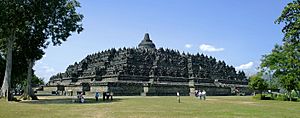
Yogyakarta is full of old buildings, famous landmarks, and important monuments. It's close to the amazing Borobudur and Prambanan temples, and it has the unique Javanese court culture of the Kraton. Because of all this, Yogyakarta is a popular place for tourists.
- Malioboro Street is a famous area for shopping and trying local foods. It's a great place to walk around.
- The Yogyakarta Kraton is the palace where the Sultan lives. It's a center of Javanese culture and has a museum with royal artifacts.
- The Tugu monument is an important symbol of Yogyakarta.
- The 1 March monument on Jalan Malioboro remembers the General Offensive of 1 March 1949 during Indonesia's fight for independence.
Culture and Traditions in Yogyakarta

Yogyakarta is known for its rich traditions and crafts:
- Batik fabric production: You can find beautiful batik at the famous Beringharjo market.
- Silverwork: Fine jewelry is made here, especially in Kotagede.
- Traditional Javanese dance: You can see performances like the Ramayana wayang wong at Prambanan and Purowisata. Other royal court dances are performed at the Kraton Ngayogyakarta Hadiningrat.
- Wayang kulit: These are traditional Javanese leather puppetry shows that use shadows to tell stories.
- Gamelan music: This is traditional Indonesian music, and Yogyakarta has its own style called Gamelan Yogyakarta, which developed in the royal courts.
- Annual festivals: Important Javanese festivals like the Yogyakarta Art Festival and Sekaten are celebrated here.
Delicious Food in Yogyakarta
Yogyakarta has many unique and tasty traditional foods:
- Gudeg Yogya: This is a famous dish made from young jack fruit boiled for hours with palm sugar and coconut milk. It's often served with chicken in coconut milk (opor ayam), hard-boiled eggs (telur pindang), and spicy beef skin stew (krechek). Yogyakarta's gudeg is sweet and savory, and a bit reddish from Javanese teak leaves.
- Krechek: A spicy beef skin dish made from seasoned beef skin crackers. It's usually a side dish with gudeg.
- Ayam goreng Kalasan: Chicken stewed in spices and coconut water, then deep-fried until crispy.
- Bakpia and bakpia Pathok: Sweet pastries filled with sugared mung bean paste. You can find the famous bakpia Pathok near Jalan Malioboro.
- Kipo: A small, sweet snack from Kotagede made of glutinous rice flour dough filled with grated coconut and palm sugar. Its name comes from the Javanese question, "What is this?"
- Ronde: A hot Javanese dessert with glutinous rice balls filled with peanut paste, floating in a sweet ginger and lemongrass tea.
Museums to Visit
Yogyakarta has several interesting museums:
- The Sonobudoyo Museum and museums in the royal court.
- The Fort Vredeburg Museum, located in an old Dutch fort.
- The Monument to the Recapture of Yogyakarta, which remembers the city's role in the fight for independence.
- The Air Force Museum (Museum Pusat Dirgantara Mandala) has many old aircraft, including some rare Russian planes.
- The Jogja National Museum.
Sports in Yogyakarta
The PSIM Yogyakarta football team, which plays in the Liga 2, is based in Yogyakarta. Their home stadium is Mandala Krida Stadium.
Learning in Yogyakarta: Education Hub
Yogyakarta is a major center for education in Indonesia. It is home to Gadjah Mada University, which is Indonesia's largest and most famous university.
Other public universities include:
- Yogyakarta State University
- Sunan Kalijaga Islamic University
- The Indonesian Institute of the Arts
There are also many well-known private universities, such as Muhammadiyah University of Yogyakarta and Islamic University of Indonesia. The Indonesian Air Force Academy is also located here.
Getting Around Yogyakarta: Transportation
Air Travel
Yogyakarta is mainly served by Yogyakarta International Airport. This airport connects the city to other big cities in Indonesia and to Kuala Lumpur in Malaysia. There is also Adisutjipto Airport, which handles fewer commercial flights.
Train Travel
Yogyakarta first had trains in 1872. The city is on one of the main railway lines that cross Java, connecting Jakarta in the west to Surabaya in the east.
Yogyakarta has two main passenger train stations:
- Yogyakarta Station: For business and executive class trains.
- Lempuyangan Station: For economy class trains.
There are also commuter train services that connect Yogyakarta to nearby cities like Surakarta and Kutoarjo. The Yogyakarta International Airport Rail Link connects the airport to the city center.
Roads and Buses
The city has a good system of public buses. It's also a major starting point for buses that travel between cities in Java and to Bali. You can also find taxis, traditional horse-drawn carriages (andongs), and becaks (pedicabs).
Motorbikes are very common for personal travel. Yogyakarta also has a "Ring Road" highway and several overpasses to help with traffic.
Trans Jogja Bus System
Since 2008, Yogyakarta has had a special bus system called Trans Jogja. These buses run on main streets and have routes that cover the city, connecting major areas and even the airport.
News and Media in Yogyakarta
Kedaulatan Rakyat (KR) is the main newspaper in Yogyakarta. It started in 1945 and is one of Indonesia's oldest newspapers that is still published. Other daily newspapers include Harian Jogja and Tribun Jogja.
Yogyakarta also has radio and television stations. The public radio station RRI Yogyakarta has a studio in the city. Many TV stations, like TVRI Yogyakarta, are located in the nearby Sleman Regency but broadcast to Yogyakarta.
Sister Cities of Yogyakarta
Yogyakarta has special partnerships with other cities around the world, called "sister cities":
 Baalbek, Lebanon
Baalbek, Lebanon Commewijne, Suriname
Commewijne, Suriname Gangbuk District, Seoul, South Korea
Gangbuk District, Seoul, South Korea Huế, Vietnam
Huế, Vietnam Le Mont-Dore, New Caledonia
Le Mont-Dore, New Caledonia Paramaribo, Suriname
Paramaribo, Suriname
Images for kids
See also
 In Spanish: Yogyakarta para niños
In Spanish: Yogyakarta para niños


